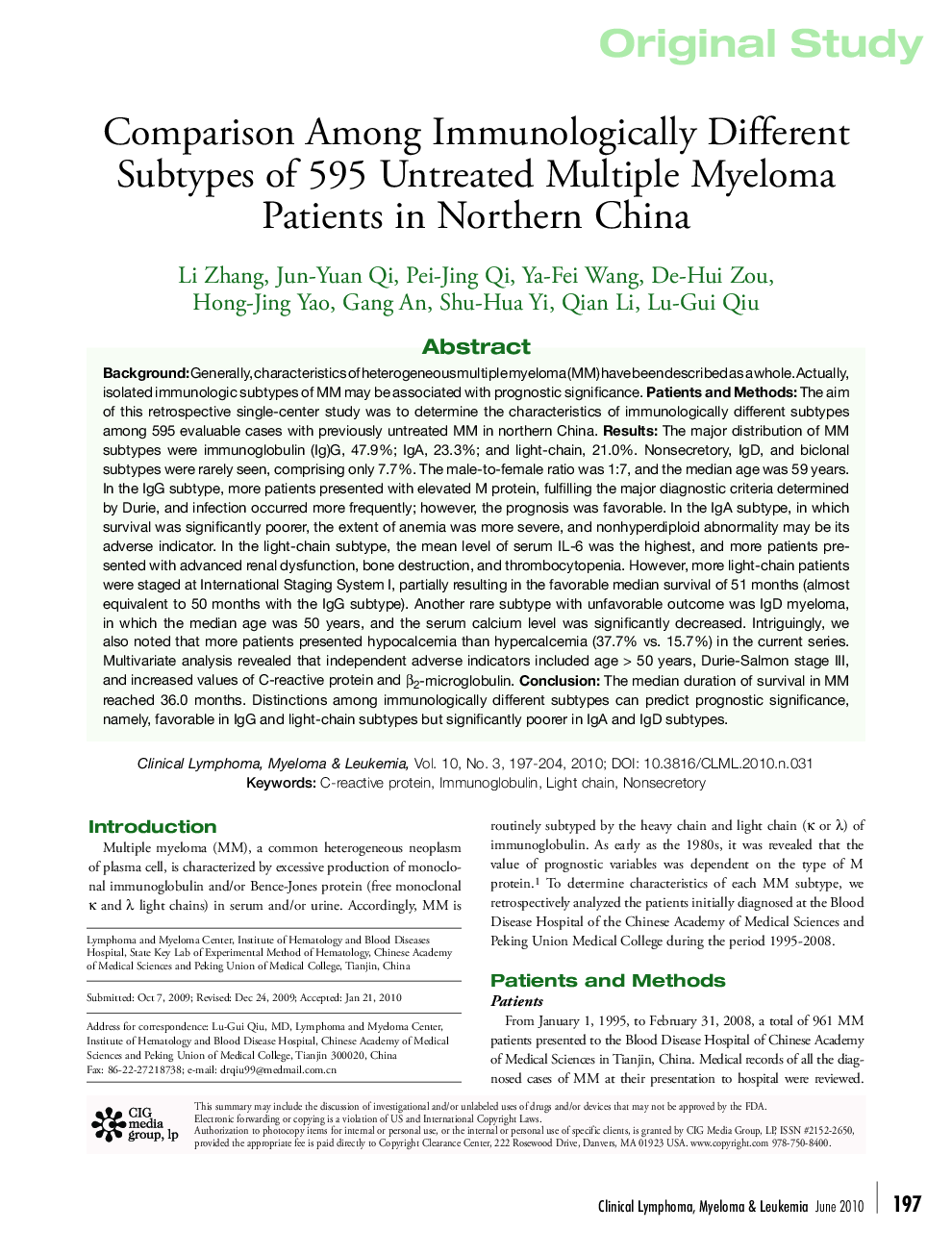| Article ID | Journal | Published Year | Pages | File Type |
|---|---|---|---|---|
| 2755438 | Clinical Lymphoma Myeloma and Leukemia | 2010 | 8 Pages |
BackgroundGenerally, characteristics of heterogeneous multiple myeloma (MM) have been described as a whole. Actually, isolated immunologic subtypes of MM may be associated with prognostic significance.Patients and MethodsThe aim of this retrospective single-center study was to determine the characteristics of immunologically different subtypes among 595 evaluable cases with previously untreated MM in northern China.ResultsThe major distribution of MM subtypes were immunoglobulin (Ig)G, 47.9%; IgA, 23.3%; and light-chain, 21.0%. Nonsecretory, IgD, and biclonal subtypes were rarely seen, comprising only 7.7%. The male-to-female ratio was 1:7, and the median age was 59 years. In the IgG subtype, more patients presented with elevated M protein, fulfilling the major diagnostic criteria determined by Durie, and infection occurred more frequently; however, the prognosis was favorable. In the IgA subtype, in which survival was significantly poorer, the extent of anemia was more severe, and nonhyperdiploid abnormality may be its adverse indicator. In the light-chain subtype, the mean level of serum IL-6 was the highest, and more patients presented with advanced renal dysfunction, bone destruction, and thrombocytopenia. However, more light-chain patients were staged at International Staging System I, partially resulting in the favorable median survival of 51 months (almost equivalent to 50 months with the IgG subtype). Another rare subtype with unfavorable outcome was IgD myeloma, in which the median age was 50 years, and the serum calcium level was significantly decreased. Intriguingly, we also noted that more patients presented hypocalcemia than hypercalcemia (37.7% vs. 15.7%) in the current series. Multivariate analysis revealed that independent adverse indicators included age > 50 years, Durie-Salmon stage III, and increased values of C-reactive protein and β2-microglobulin.ConclusionThe median duration of survival in MM reached 36.0 months. Distinctions among immunologically different subtypes can predict prognostic significance, namely, favorable in IgG and light-chain subtypes but significantly poorer in IgA and IgD subtypes.
